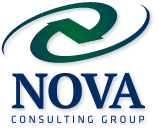The sales call is a critical element of any sales process. When done well, opportunities are closed, revenue is generated and new customers are added. The opposite applies when they don’t go well.
So what constitutes a good sales call? First, it depends on your business. For the transactional sale the “sales call” is pretty straight forward (here is where Economy 2.0 really works for the customer); the customer finds you, does a comparison with your competition, and makes their selection. You may never “talk” with the customer in these selling situations. For products and services that are more complex you have a selling situation with a lot more “moving parts”. For the purposes of this discussion we are addressing the complex sale scenario.
Here are the steps – include them and your chances of success rise but skip a step and the opposite effect will take hold:
- Pre-call plan: If mistakes are made it is here. We find that many teams overlook this important step. This is where the sales (coach) leader can help the team member organize their thoughts and materials. Ask – What is the objective of this meeting?
- Introduction: Be brief and to the point. Give them a reason to spend the time with you. Remember the person on the other side of the desk is thinking…”do I really need to spend more than a few minutes with this person? If you work too hard to develop (inauthentic) rapport, your prospect will not appreciate it (studies show that people know what you are doing).
- Uncovering and building needs: Good questions here. Spend time with your sales coach (aka your sales manager) to develop insightful, straight-forward questions which allow your prospect to talk about his situation. Take notes! We don’t do this enough. These will be important during the call debrief and as you build your recommendations.
- Recommendations: Depending on your particular product/service, recommendations may come during a separate meeting. No matter where recommendations occur in your process, be certain to include:
- Summary of all the needs and requirements discovered
- Get your prospective customer’s agreement to the needs and requirements you have identified
- Review the features and benefits of your offering— that relate to the prospect
- Offer your insight about the problem
- Help your prospect see their situation from a different perspective
- Handing objections and concerns: Practice, practice, practice. Don’t argue; it invites retaliation.
- Negotiation: There are volumes published on negotiation, so I will leave you to your research on the topic. Just keep in mind like handling objectives – don’t argue. Find common ground. Understand your position and your prospect’s position. Work to satisfy all needs at the table. This is where long-term alliances start (or end).
- Closing: Ask for the business. If you have done your homework, you know how to solve the problem. Review the facts, your findings and get a commitment.
- Debriefing: An important but often overlooked step. Do it on every call. Be specific. Did you accomplish your objective? What went well or did not go well? What would you differently? Action items? Next steps?
Coached or coach, depending on your role, you will need to modify your activities in each step but the steps are universal. Commit them to your process and succeed.
Image: Geometry Daniel Faro 6298


